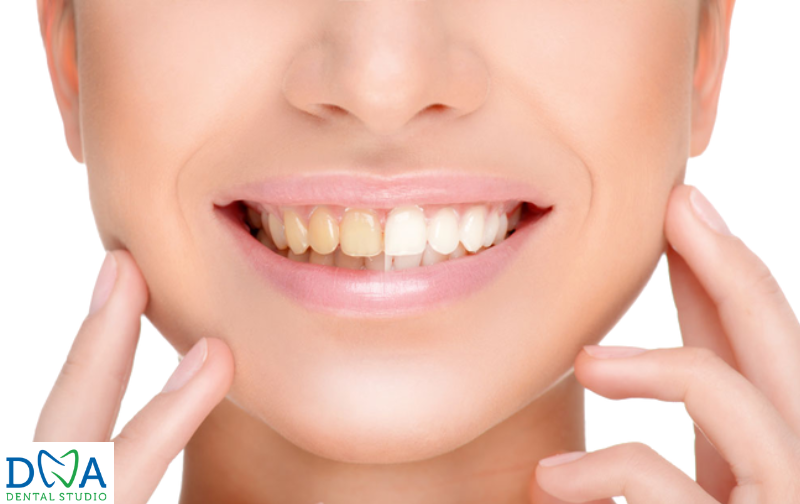There’s no denying that having a bright, white smile is something we all desire. From social media influencers to Hollywood celebrities, everyone seems to have a set of pearly whites that sparkle like diamonds in the sun. But what’s the secret behind their perfectly white smiles? The answer lies in teeth whitening! In this blog post, we’ll delve into the science behind teeth whitening and uncover how it works. So sit back, relax, and get ready to learn everything you need to know about achieving a brighter smile!
What Is Teeth Whitening?
Teeth whitening is a popular cosmetic dental procedure that aims to lighten the shade of your teeth, making them appear brighter and whiter. It’s a simple and effective way to improve the appearance of your smile and boost your confidence.
The process involves using various bleaching agents to remove stains from the surface of your teeth caused by food, drinks, smoking, or aging. These agents penetrate into the enamel layer of your teeth and break down the molecules that cause discoloration.
One thing to note is that teeth whitening only works on natural tooth enamel. It won’t work on crowns, veneers, or fillings as they are made from different materials.
There are two main types of teeth whitening procedures: in-office treatment performed by a dentist or at-home treatment using over-the-counter products like strips, gels, or trays. Both methods have their pros and cons depending on individual needs and preferences.
It’s important to keep in mind that while teeth whitening can provide impressive results, it’s not a permanent solution. Regular maintenance and touch-ups may be necessary to maintain your desired level of brightness.
How Does Teeth Whitening Work?
Teeth whitening is a cosmetic dental procedure that helps to remove stains and discolorations from the teeth. It works by using either chemical or physical agents to penetrate through the enamel and remove the deep-seated stains.
The most common type of teeth whitening involves using hydrogen peroxide or carbamide peroxide as a bleaching agent. These chemicals break down into oxygen molecules, which then penetrate through the enamel and dentin layers of the tooth, breaking apart any stain molecules they encounter along the way.
Another popular method of teeth whitening is called light-activated bleaching. This technique uses a special lamp or laser to activate a chemical gel applied onto your teeth, aiding in removing surface-level stains.
Other less invasive methods such as charcoal pastes might be applied directly on top of your natural toothpaste once every few days and are also available for those who prefer natural remedies over chemicals. However, it’s always advised to consult with professional dentists before trying out home remedies since they’re not backed by scientific research and can potentially cause harm if used improperly.
While there are different types of teeth whitening methods available today, all work under one principle: penetrating through enamel layers with an active agent that breaks up staining particles within them!
The Different Types Of Teeth Whitening Products
When it comes to teeth whitening, there are plenty of options available on the market. From toothpaste and mouthwash to professional treatments at the dentist’s office, each product offers different benefits for varying levels of staining.
- One popular type of teeth whitening product is over-the-counter whitening strips. These thin, flexible pieces of plastic are coated with a peroxide-based gel that helps remove surface stains from teeth. They can be easily applied at home and typically need to be worn for 30 minutes a day for 7-14 days.
- Another option is tray-based whitening kits, which usually consist of custom-fitted trays filled with a bleaching solution that you wear overnight or for an hour or two during the day. These products provide more dramatic results than strips but may cause sensitivity if misused.
- For those looking for quick results, in-office professional treatments offer immediate improvement in just one visit. This involves applying a high-concentration bleaching gel directly onto your teeth under professional supervision.
It’s important to note that not all products work equally well for every individual based on their specific needs and level of discoloration. It’s best to consult with your dentist before trying any new teeth whitening products to determine the most effective and safe approach for achieving brighter, whiter teeth.
How Long Does It Take For Teeth To Get Whiter?
The time it takes for teeth to get whiter depends on the type of whitening treatment you choose. Some treatments can produce results in just one or two sessions, while others may take several weeks or months to achieve the desired effect.
Over-the-counter whitening products such as strips and gels typically require multiple applications over a period of days or weeks before any noticeable difference is seen. These products are not as potent as professional treatments but can help maintain whiteness between dental visits.
In-office treatments done by your dentist often involve high-concentration bleaching agents that penetrate deeper into the tooth enamel, resulting in faster and more dramatic results. Depending on the severity of the staining, some patients may see an improvement after just one appointment, while others may require multiple sessions.
Custom-fitted at-home kits prescribed by your dentist are another option that produces gradual results over several weeks. These kits use lower concentrations of bleach than in-office treatments but can still be effective with consistent use.
The length of time it takes to see visible improvements depends on various factors such as individual genetics, lifestyle habits like smoking and drinking coffee/tea/wine, and adherence to proper oral hygiene practices.
The Bottom Line
Teeth whitening has become a popular cosmetic dental procedure. It is a safe and effective way to brighten your smile and boost your confidence. The science behind teeth whitening is based on the use of active ingredients like hydrogen peroxide or carbamide peroxide, which penetrate the enamel to break down stains. There are different types of teeth whitening products available in various forms such as gels, strips, trays, and toothpaste.
When choosing a teeth whitening product or procedure, it’s essential to consult with our dentist in Burbank first to understand the best options for you based on your oral health condition. While there may be some minor side effects associated with teeth whitening treatments such as sensitivity or gum irritation, they can usually be avoided by following proper guidelines.
Remember that maintaining good oral hygiene habits such as brushing twice daily and flossing regularly can help keep your smile brighter for longer between professional treatments. With these tips in mind along with regular visits to our Burbank dentist every six months for cleaning and checkup appointments will ensure that you have healthy white teeth all year round! Book your dental appointment today.


